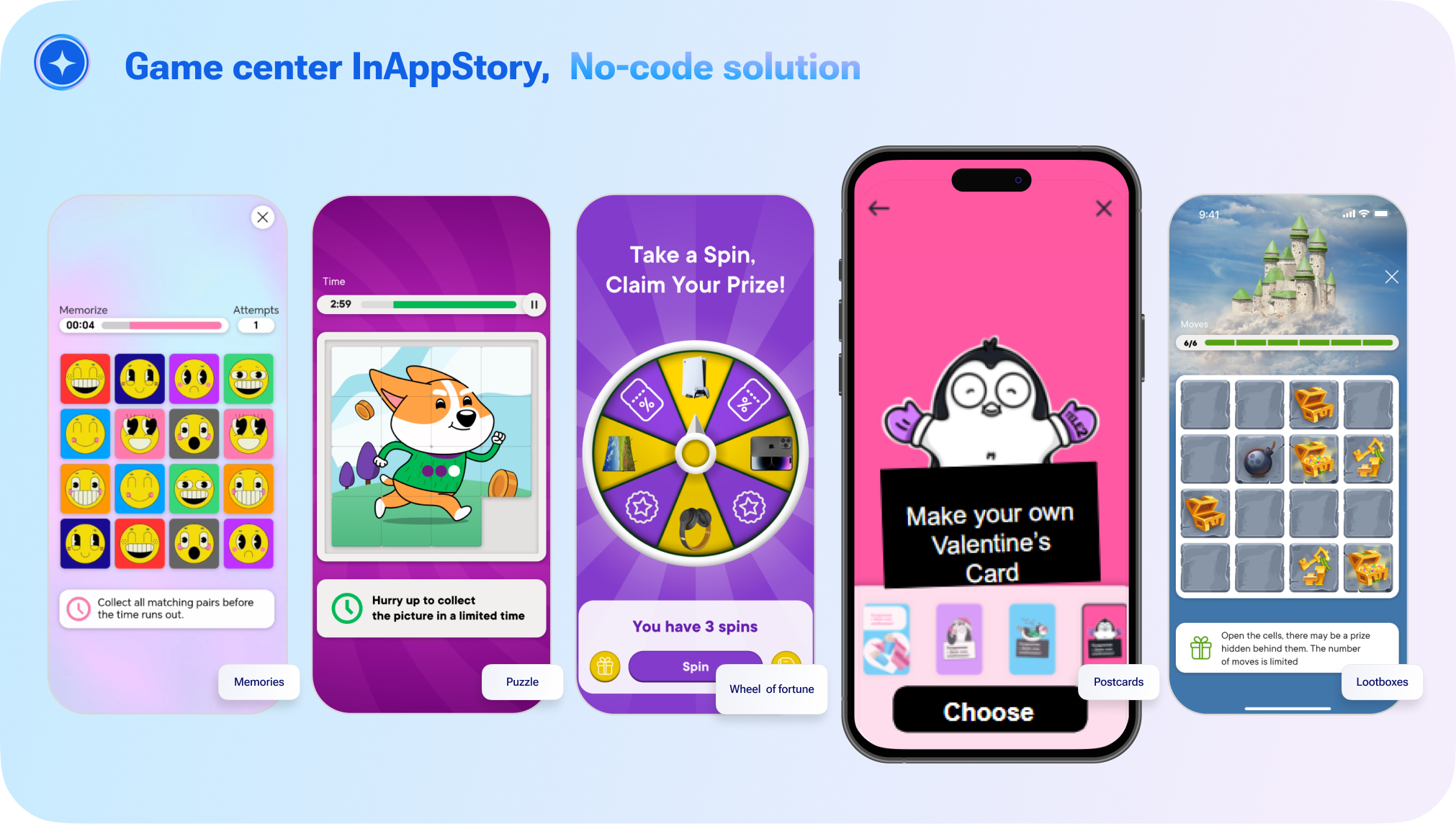.webp?2025-12-17T15:00:29.367Z)
Spotify Wrapped ideas make stats lovable

Wheel of Fortune in Business
Karina
Author @ InAppStory
A wheel of fortune for business is a digital interactive tool used in marketing, sales, and user engagement strategies. It simulates a prize wheel that users can spin to receive a reward, discount, or other incentive. The wheel is typically displayed on a website, mobile app, or landing page.
This format draws from gamification principles. It introduces a chance-based interaction, which encourages participation through unpredictability and the potential for instant rewards.
Businesses often use digital wheel of fortune tools during promotions, product launches, or lead generation campaigns. These tools are designed to improve interaction rates, increase email or data capture, and support short-term conversion goals.
How Wheel of Fortune Works
To run such a campaign, businesses can use a wheel of fortune game generator, which is a software tool (usually no-code or low-code) that allows for quick creation and deployment. These generators provide customizable segments, visual branding options, and backend integrations for analytics and email capture.
Users interact with the wheel by clicking or tapping to spin. Each segment corresponds to a reward or outcome. Businesses may define the odds of each outcome based on their promotional strategy.
It is also possible to create your own wheel of fortune game without third-party tools, using custom HTML, JavaScript, and backend logic. However, most companies opt for ready-made platforms due to speed, cost, and ease of integration.
Why Businesses Use Digital Wheel of Fortune
Businesses use wheels of fortune primarily to improve engagement metrics. The format performs well for capturing attention, particularly in environments where users are otherwise likely to ignore traditional pop-ups or static banners.
The tool is commonly used to:
- Increase email sign-ups
- Offer time-limited discounts
- Boost participation during seasonal campaigns
- Encourage users to stay longer on a page
From a behavioral perspective, the format takes advantage of the “variable reward” mechanism. This psychological effect makes users more likely to engage with the interface due to the uncertainty of the outcome.
In this context, the digital wheel functions as a lightweight form of advergaming, where game-like elements are integrated into brand or marketing experiences to create emotional engagement. Unlike fixed coupons or offers, creating a wheel of fortune allows businesses to introduce perceived value without increasing costs, since not all rewards need to be high-value or granted with equal probability.
Common Use Cases
- E-commerce promotions: Users spin to receive discounts, free shipping, or add-on products.
- Lead generation: Entry to the wheel requires email or phone number submission.
- Product launches: Used to introduce new items with exclusive launch rewards.
- Event engagement: Visitors to virtual or physical events use the wheel for instant giveaways.
Wheel of Fortune in Mobile Apps
In mobile applications, the wheel of fortune format is increasingly used as a user engagement mechanism. Its integration into mobile environments is driven by the need for interactive, lightweight experiences that retain users and encourage conversion within limited attention spans.
Mobile apps use wheels of fortune in several ways:
- Onboarding flows, where new users spin for a welcome reward
- Daily engagement loops, encouraging return visits
- In-app purchase incentives, offering time-limited discounts or virtual rewards
- Gamified promotions, particularly in shopping, fitness, and entertainment apps
The implementation is typically done using native components or web-based overlays embedded via SDKs. Many apps rely on third-party services or wheel of fortune game generators that support mobile optimization, gesture control, and lightweight load times.
Unlike desktop or web campaigns, digital wheel of fortune tools in mobile apps must account for screen size, tap precision, and session length. As a result, mobile-specific adaptations often include simplified visuals, larger interactive zones, and reduced prize variability to keep the experience fast and intuitive.
Mobile data also supports personalization. Based on behavioral inputs, some apps dynamically adjust the prizes or trigger the wheel only under certain conditions such as after a user completes a milestone or abandons a cart.
When done well, creating a wheel of fortune in mobile apps can improve retention, boost in-app conversion, and contribute to daily active usage without adding friction.
⚡ To broaden your understanding of gamification in mobile environments, explore other game mechanics examples commonly used in mobile apps, such as progress bars, daily challenges, or loot boxes. Each offers unique engagement opportunities tailored to different user behaviors and product goals.
Conclusion
The wheel of fortune for business is a structured, outcome-driven format that combines gamified interaction with measurable marketing goals. Whether built in-house or deployed through a wheel of fortune game generator, it remains a practical tool for increasing engagement, collecting user data, and driving conversion in a short time frame.
InAppStory lets teams select a game mechanics, add targeting rules, and run an A‑B test without touching native code. That saves engineering hours for core product work. Keep the mention natural, keep it short, and keep it useful.

For brands looking for a completely unique experience, our custom game development service offers tailored solutions that fit your specific needs. We design and build games that not only entertain but also align with your long-term business strategy.
Why InAppStory?
- Proven Success: With over 50 successful gamification projects, we know what it takes to create impactful gamified experiences.
- Expertise: Our team combines deep game design knowledge with business strategy, ensuring your gamified experiences are not just fun, but also effective.
- Full Support: From initial concept to launch, we’re with you every step of the way to ensure your gamification strategy delivers results.

